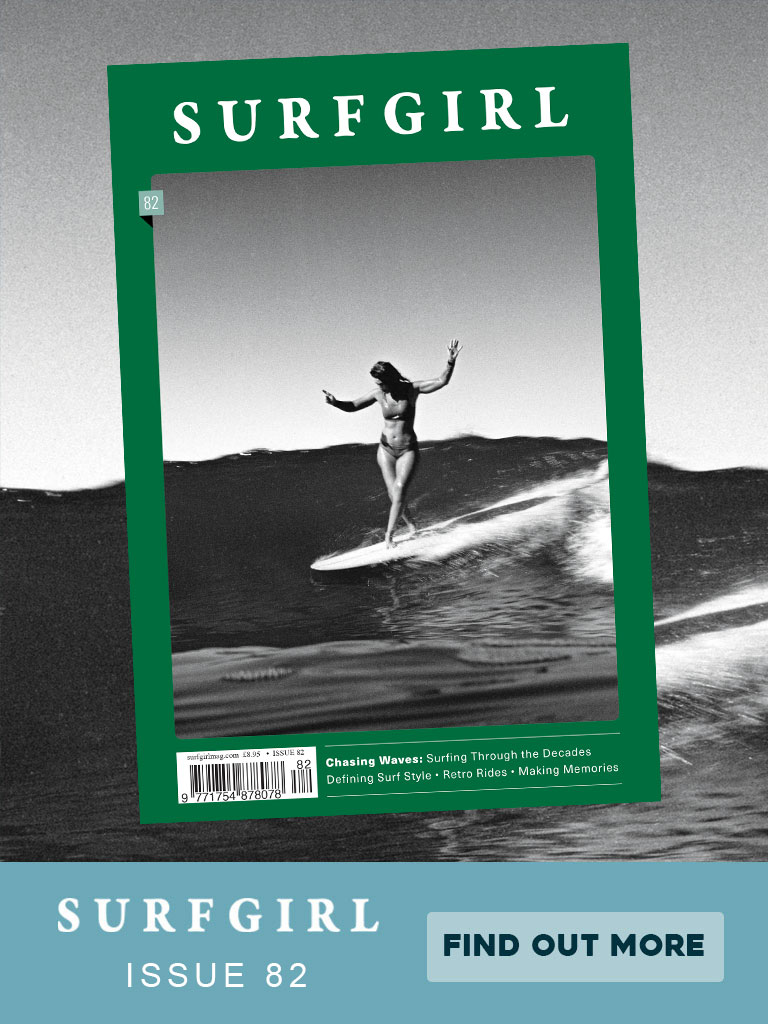Stephanie Gilmore is a surfing icon, a 6 x World Champion, respected and revered by all. By her own admission she never feared defeat, she entered the line-up with a supreme confidence and dominated female surfing. That was until one night, in her hometown of Coolongatta, she was attacked by a complete stranger.

Stephanie In The Water, the award winning fly on the wall documentary follows Steph Gilmore through this most difficult passage of her life. It is an incredibly intimate insight into Steph’s life on and off the tour, pushing the cutting edge of surfing, fighting back from an attack that threw her whole life off balance. The resulting film has won a raft of awards from around the globe, praised for its honesty and openness.
The film has it’s Southwest Premiere at The Approaching Lines International Festival of Surf by Reef on Saturday, presented by the film’s producer and editor Isabel Freeman, who will take part in an audience Q&A.
Tickets £5 are available HERE: http://approachinglines.com/stephanie-water/


Approaching Lines Director Chris Nelson caught up with Steph to find out more about the film:
How did the movie come about Steph?
Stephanie Gilmore: We went through Ava’s Warbrick (the director) father, Doug “Claw” Warbick, the Rip Curl co-founder. I was sponsored by Rip Curl at the time, so he put us in contact. The first time we met actually, it was a funny story, we showed up to meet each other and I had brought my sister with me for moral support, and Ava showed up with her sister, Lisa. So yeah it was cool. We eventually became great friends, that was the start of our friendship and through the entire filming processes it blossomed.
Did you have a timeframe in mind for the project, or was it quite open ended to begin with?
SG: Well I think because of the way we began the project, we didn’t necessarily have a real end game. And then once we sort of saw potential and we started sculpting what we saw to be a story and of course that means the story continues.
And how was it traveling together and filming, how was that process? With documentaries you need a certain amount of access to have authenticity, but at the same time there are lines that you have to respect.
SG: As the project went along, my creative curiosity jumped-in and I became really comfortable. The camera became another friend, and slowly I thought, you know what: “The more intimate it is and the more I let them into my world, the more everyone will benefit from it.” I think that basically having a love for film I knew that this would be really great if I put my heart and soul into it, then it would be really cool.
The film follows you through quite a transition in your life, you changed sponsors and then the attack. Was there any time when you were doing the project you thought, maybe I don’t really want to continue with it now, maybe this is a time when I need to take a step back and have a bit of privacy?
SG: Not really you know. I said to Ava and a few people that maybe it wouldn’t be so boring now because before was just success: she keeps winning, she won again, another trophy etc. There was no real raw emotion to it, and it’s funny when you throw something out into the universe what comes back. But yeah, I never really wanted to stop filming, it was part of the journey – the road just got a little bumpy – but I knew that if I could let them in and make that part of the filming process, it would be great.



